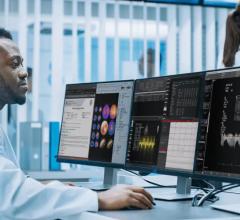
McKesson Cardiology is an all-encompassing solution, providing diagnostic digital image management, archiving, procedure reporting and workflow management.
The state of cardiology care, today and for the future, paints a glowing — and growing — picture. Whether from echo, EKG, cardiac cath, nuclear medicine, multislice CT or MR, the number of images produced to diagnose and treat a single patient can range from tens to thousands. To help manage the data and guide them in their decision-making, cardiologists rely on cardiology information and image management systems (CIIMS) to access, display, review and archive past and present cardiac studies.
Seamless interfacing, structured reporting
One of the biggest benefits of CIIMS, according to cardiologists, is the ability to look at multiple modality images at the same time on one system.
Scott C. Carollo, M.D., F.A.C.C, who sees patients at three of Alegant Health System’s (Omaha, NE) hospitals, refers to it as the “consolidation of a global amount of information — general medicine, surgical or cardiac — at your fingertips.”
Dr. Carollo and all of Alegant’s five hospitals work off of Siemens’ Soarian Cardiology management system.
You can easily scan through a patient’s medical record, he says, to get the necessary information needed to make a clinical decision. It’s also nice to review and make decisions remotely on patients from other facilities. In addition, “reports are available almost immediately and can be accessed in one setting,” said Dr. Carollo.
“Being able to pull up an echo image, for example, and look at it alongside a cath image on the same screen, as well as the ability to compare old and new studies, adds a lot of functionality, convenience and accuracy,” added Brett C. Burgess, M.D., F.A.C.C. Dr. Burgess and his colleagues at Memorial Health University Medical Center, Savannah, GA, are loyal users of McKesson’s Horizon Cardiology.
“Horizon Cardiology allows you to generate a report quickly — as you are looking at the study — that goes directly into the hospital information system and is immediately available for review by the referring physician,” said Dr. Burgess.
With the PICOMEnterprise from ScImage, Michael McKinney, M.D. and the 27 other cardiologists from Cardiovascular Associates in Birmingham, AL can pull up studies in designated reading areas, at their desks or download them to their home computers. The facility is also wired so that cardiologists can retrieve the studies in the exam room to discuss them with patients.
Dr. McKinney especially likes the measurement tool that ScImage provided at the practice’s request, which allows them to do measurements within the software without having to go back to the original source of the study. “For example, if we don’t think a tech has measured an echo correctly, we can pull up a calibrating feature and do the measurements ourselves,” he explained.
Michael Venturini, M.D., F.A.C.C., chief medical officer, Indiana Heart Hospital, has been using GE’s Centricity Cardiology since the hospital opened in 2003. Acquisition of the system was part of a larger single-vendor strategy with respect to cardiology IT and the EMR, says Dr. Venturini.
“The hospital is paperless on the inpatient side and so we put a high priority on interoperability,” explained Dr. Venturini. “The ability for physicians to easily move — at one computer — from the electronic hospital record to images or reports is very important.”
“The system is exceedingly helpful in the cath lab,” continued Dr. Venturini. Its Web-based abilities allow a surgeon or another cardiologist to pull up a study when necessary and consult with the cath lab physician, he says.
Robust, accessible storage
The ability to access large amounts of images, however, does place a tremendous burden on the storage system.
“At our facility, cardiac CT can typically generate over 10,000 images per patient,” said Michael Poon, M.D., chief of Cardiovascular Medicine and Integrated Imaging, Cabrini Medical Center, New York. “This represents a whole new level of challenge for data storage,“ he explained.
Cabrini’s server would fill up very quickly with both onsite date and data from other facilities. Because capital cost restraints prohibited them from investing in a full-blown PACS, Cabrini opted for the ImageGrid PACS appliance from Candelis.
“Candelis’ innovative solution provides us with a component of a PACS that allows us to unload data from our server and store it in their data repository system,” explained Dr. Poon. “This is a very versatile system for enterprises like ours that do not have an unlimited amount of capital, allowing us to easily read, store track and partition CT and MR data from many different sites, while integrating with the EMR.”




 May 15, 2024
May 15, 2024 








